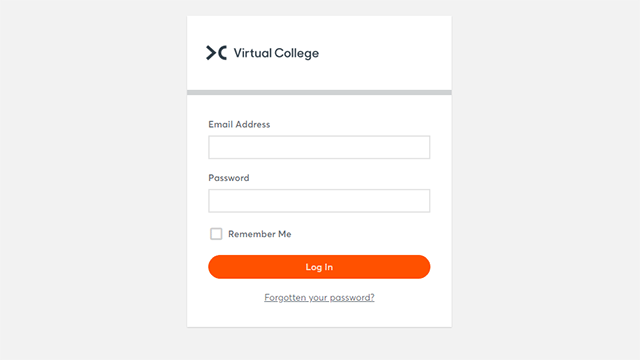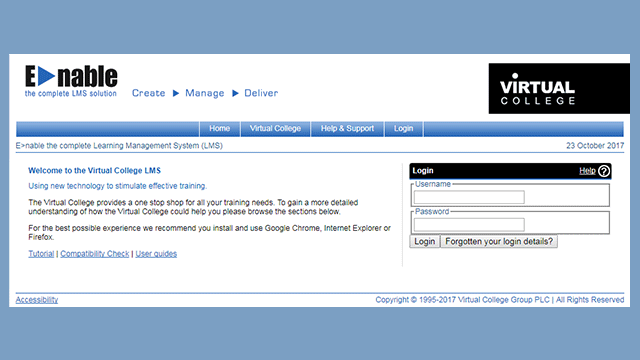Statutory and Mandatory: Non-Clinical Package
Aimed at those working in a healthcare environment this Statutory and Mandatory: Non-Clinical Package is designed to provide effective learning for staff to ensure they understand how to work safely in a healthcare environment. Ideal as an induction package, it provides CPD approved training with an instant digital certificate on completion.
Package Overview
Format
- Intermediate
- Up to 8 Hours
- Online Study
- Self-Printed Certificate
Accreditation
- 8 CPD Hours
- CPD Certified
Package description
Staff working in a healthcare environment need to ensure that they undertake statutory training to ensure they are able to do their job safely. This training package is designed to provide effective learning for staff to ensure they understand how to work safely in a healthcare environment. It is ideal as induction training, and can be completed by staff at their convenience as all progress will be saved. There are challenges throughout the course to test your knowledge on what you have learnt so far.
Our Statutory and Mandatory: Non-Clinical Training Package gives you a saving of 70% when compared to purchasing the 10 included courses separately.
Staff working in a healthcare environment need to ensure that they undertake statutory training to ensure they are able to do their job safely.
The training package is designed to provide effective learning for staff to ensure they understand how to work safely in a healthcare environment.
It is ideal as induction training, and can be completed by staff at their convenience as all progress will be saved.
The package is a cost effective way to ensure staff complete essential workplace training for the healthcare sector.
About the Package
The training package includes 10 other essential statutory and mandatory courses – to help with your staff training needs.
Our Statutory & Mandatory Training Courses have been designed to work on all devices including mobiles, laptops, tablets and desktops giving you the flexibility to complete the training at a time and in a location suitable for you.
With healthcare staff often expected to complete training on an annual basis there will be topics you will be more familiar with than others. Our self assessment tool, which is at the start of each course, will allow you to test your knowledge to see if you would like to complete the training or progress straight to the end of course test.
At the end of each course, you will need to complete a test that consists of multiple choice questions. Learners are required to achieve an 80% pass mark, and - if necessary - may attempt the test six times at no extra cost. If learners do not achieve the pass mark, further attempts may be given by contacting our support team.
The training courses are fully interactive and is packed with various multimedia forms including video, animation and custom graphics to give you the best learning experience.
Each element of the training is WCAG 2.2 accessible and includes scenarios, contextualised activities, reflective activities, knowledge checks, bite sized lessons and so much more.
What does this package cover?
This package for non-clinical healthcare roles brings together 10 individual courses, covering a number of topics relevant to the day-to-day operations within a healthcare organisation that will keep all staff members safe.
Equality, Diversity and Human Rights
- Define the terms 'equality', 'diversity' and 'human rights', and explain how these relate to the health sector
- List the key principles of UK legislation regarding equality and human rights
- Describe the benefits of an effective approach to equality and diversity within healthcare, including monitoring equalities
- Promote inclusion and treat everyone with dignity, courtesy, and respect
- Describe what you should do if there are concerns about equality and diversity in your workplace
Health, Safety and Welfare
- Describe what you can expect from your organisation in terms of processes, policies and engagement around health and safety
- List the main legal requirements that you and your organisation must comply with
- Provide examples of hazards you might come across at work, and describe how to report them
- List the five stages of risk assessment
- Describe how to report incidents, and explain why this is important
Conflict Resolution
- List the common causes of conflict and identify the different stages of conflict
- Outline the two forms of communication and the levels of emphasis that can be placed on them during conflict
- Identify potential causes of breakdown in communication and the importance of creating the right conditions for communication to succeed
- Put into practice the three communication models that can assist individuals in dealing with different levels of conflict
- Recognise behavioural patterns and warning or danger signals displayed by individuals during conflict
- Understand how to keep yourself safe in conflict situations whilst still being able to provide the correct level of support to individuals
- Put into practice the appropriate methods and actions for conflict situations, such as ‘reasonable force’
- Find the support that is available to you
Fire Safety
- Understand the characteristics of fire
- Know the fire hazards in your workplace
- Be aware of the importance of fire risk assessments
- Practise and promote fire prevention and fire safety
- Know how to act in the event of a fire
- Be familiar with fire evacuation procedures
Infection Prevention and Control Level 1
- Identify how you can contribute to infection prevention and control
- Explain and put into practice the standard infection prevention and control precautions relevant to your role, such as hand hygiene, protective clothing, managing spillages and accidental exposure to blood and bodily fluids, sharps safety, waste management, and managing the environment and care equipment
- Explain how poor health or hygiene can increase the spread of infection in the workplace
Moving and Handling Level 1
- Describe moving and handling risk factors
- Explain the responsibilities of employers and employees under relevant national health and safety legislation
- List the principles of safer moving and handling
- List the principles of using an ergonomic approach for moving and handling activities to support musculoskeletal health
- Describe the factors to consider when undertaking a dynamic risk assessment prior to carrying out a moving and handling activity
- Develop suitable risk control strategies and resources to facilitate good practice following a risk assessment appropriate to the activity and the individual’s role
Safeguarding Adults
- Recognise what constitutes harm, abuse and neglect, and identify any signs of harm, abuse or neglect
- Describe how to ensure that effective advocacy is provided where required (for example, where there are mental capacity or communication issues in line with the legislation and professional guidance)
- Identify your professional role, responsibilities, and professional boundaries, and those of your colleagues, in a multidisciplinary team and a multi-agency setting
- Recognise when to refer to social care, in accordance with organisational policies, if you have identified an adult safeguarding concern
- Document safeguarding concerns in a format that informs the relevant staff and agencies appropriately
- Identify the appropriate and relevant information and how to share it with other teams
- Identify key statutory and non-statutory guidance and legislation, including the Human Rights Act and mental capacity legislation, in the country of practice
Safeguarding Children
- Identify what is meant by child abuse and recognise the potential signs for concern
- Explore how a parent or carer’s physical and mental wellbeing can put a child at risk of abuse
- Discuss how to be an effective advocate for a child or young person
- Identify when and how to refer a child who is at risk of FGM
- Be aware of the risk factors for grooming, trafficking and radicalisation
- Explain the steps to make a child protection or safeguarding referral
- Describe how to document and record safeguarding/child protection concerns, including how to distinguish between fact and opinion
- Identify how to share relevant information with other team
Resuscitation Level 1
- Be able to recognise cardiorespiratory arrest.
- Know how to summon emergency help.
- Be able to start cardiopulmonary resuscitation (CPR) using chest compressions.
- List the key signs of cardiorespiratory arrest and explain what constitutes a lack of response and what counts as abnormal breathing
- Explain the steps of basic life support for attending adults who are suffering cardiorespiratory arrest
- Demonstrate correct CPR, including compressions and rescue breaths
- Demonstrate proper use of an AED
Information Governance and Data Security
- List the principles of information governance and explain the importance of data security
- Describe the different types of information
- List the principles of data security, describe the potential threats, and explain how to avoid them
- List the principles of good information handling
- Identify potential data breaches and explain what to report
- Explain the difference in responsibilities between a healthcare organisation and an individual under the Freedom of Information Act
Who should take this course and why?
This training package is designed to provide effective learning for staff to ensure they understand how to work safely in a healthcare environment, and is aimed at anyone working in a non-clinical role within in a healthcare setting, such as a doctor’s receptionist, hospital administrator, hospital porter, etc.
It is ideal as induction training, and can be completed by staff at their convenience as all progress will be saved.
Statutory and Mandatory Training: Non-Clinical Package Certificate
Each end of course test consists of 15 multiple choice questions. Learners are required to achieve a 80% pass mark, and, if necessary, may attempt the test six times at no extra cost.
If learners do not achieve the 80% pass mark, further attempts may be given by contacting our support team.
Learners will be able to download a digital certificate on completion of each course. This can be printed, and we suggest you keep it for your records. The content of this training has been independently certified as conforming to universally accepted Continuous Professional Development (CPD) guidelines.
You will learn
- Be able to define the terms ‘equality’, ‘diversity’ and ‘human rights’
- Understand how legislation promotes equality, diversity and human rights
- Have a better understanding of health and safety legislation
- Have an awareness of health, safety and security, occupational health and wellbeing provision
Who is it for?
Roles including:
- Staff working in a healthcare or social care environment in a non-clinical role
- Doctor's Receptionists
- Administrators
- Porters




















